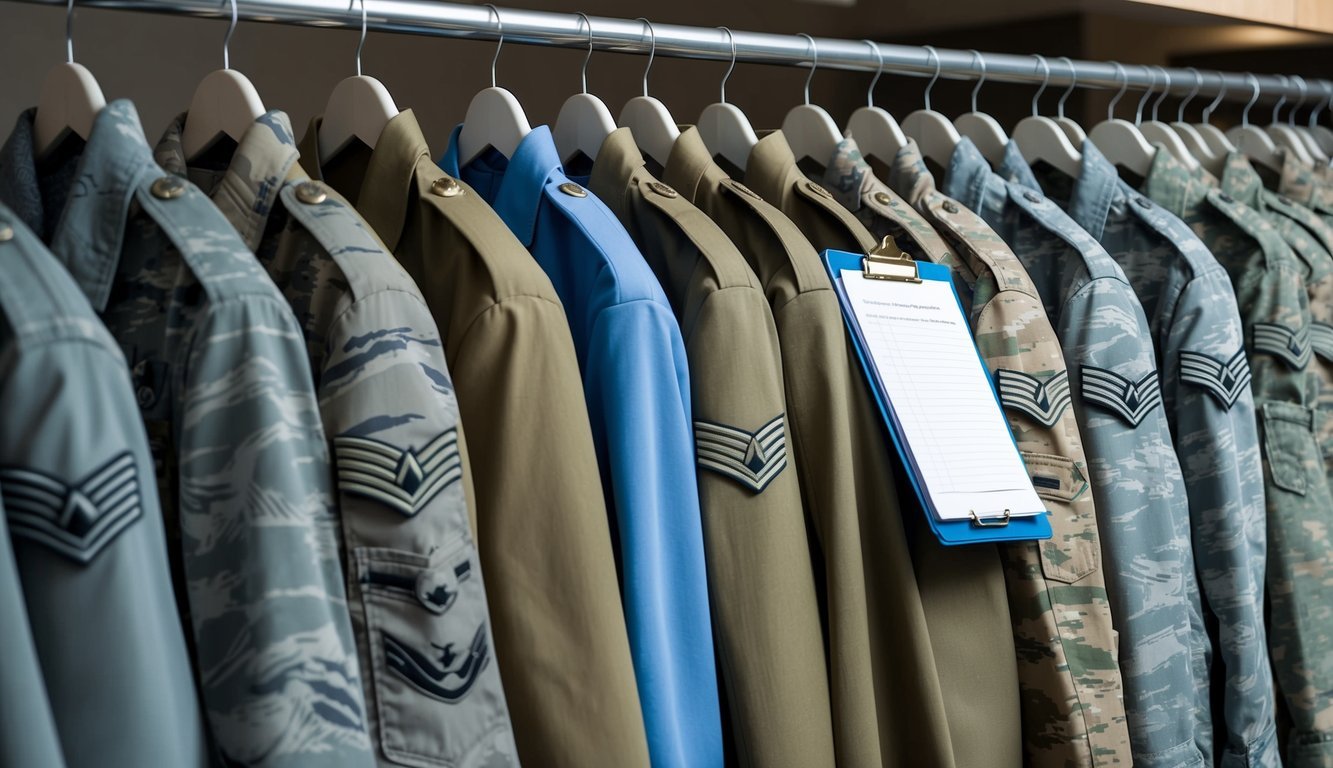Physical Address
304 North Cardinal St.
Dorchester Center, MA 02124
Physical Address
304 North Cardinal St.
Dorchester Center, MA 02124
The Army Clothing Record tracks soldiers' uniforms and gear, ensuring proper supply management, readiness, and accountability for issued items, enhancing operational efficiency and safety.

The Army Clothing Record is fascinating.
It’s not just a piece of paper or some fancy app; it’s a crucial system for keeping track of what soldiers wear.
It shows everything from uniforms to personal gear, making sure everyone gets what they need.
Think about this: the U.S. Army has a long history of managing clothing.
They’ve developed methods to track clothing issues and returns to maintain a steady supply.
This helps avoid shortages and ensures soldiers are ready for anything.
The record usually includes details like:
Are you tired of spinning your wheels and getting nowhere? Simply put, you’re out of sync: you’re out of alignment with your astral configuration.
But: there’s a kind of map that can help you reclaim your alignment. Think of it as your own personal blueprint to success and happiness: a blueprint that will help you live your most amazing life.
Get started here.
The Army Clothing Record makes me think about how much thought goes into preparing soldiers for their roles.
I wonder if everyone realizes the complexities behind the scenes.
This system not only ensures practicality but also bolsters military readiness.
The Army Clothing Record is vital for maintaining standards across the board.
It reflects the importance of being equipped properly, which can make a huge difference during missions.
So next time you see soldiers in their gear, just remember that there’s a well-organized system backing them up!

When I think about organizational clothing and individual equipment, or OCIE for short, I realize it’s crucial for our troops’ comfort and safety.
It includes a wide range of items that are essential for various missions.
Let’s break down the main pieces that make up OCIE.
There are many different types of military apparel that fall under OCIE. Combat uniforms, such as the Army Combat Uniform (ACU), play a big role in protecting soldiers.
These uniforms are designed for durability and functionality.
Then, there are tactical vests and body armor, which are vital for keeping personnel safe in combat zones.
They often include pockets and attachments for gear.
It’s interesting to think about how these pieces evolve over time, aiming to balance protection and mobility.
I also can’t leave out protective clothing, like chemical protective suits.
These are key in environments where soldiers face hazardous materials.
Imagine the importance of staying safe in those conditions! And let’s not forget boots—they’re often overlooked, but a good pair can change the game in terms of comfort and support during long missions.
Managing OCIE isn’t just about having the right gear; it’s also about keeping track of it.
Typically, each soldier is responsible for their clothing and equipment.
We often have a system for keeping inventory.
It starts with an OCIE record, listing every item issued.
Tracking these items helps ensure that we have what we need when we need it.
Updating records after inspections or when items are replaced is also important.
It makes me think about how easy it is to misplace something, and the headache that can cause! Regular checks on our gear can really save us time and trouble down the road.
So, caring for OCIE means being diligent.
Whether it’s proper cleaning or repairing our gear, a little effort goes a long way.
After all, our gear is meant to support us in the field, and keeping it in shape helps us do our jobs better.

When I think about protecting personal identification information, it really makes me pause.
PII is so important, especially for folks in the military.
It includes names, addresses, and other details that could put someone at risk if they fall into the wrong hands.
I wonder if people realize just how vulnerable we can be.
If a soldier’s PII is exposed, it could lead to identity theft or worse.
That’s why there are strict rules and guidelines.
For instance, the Army has specific ways to handle this data.
They focus on limiting access to only those who really need it.
And safeguarding this info is a big deal.
I mean, nobody wants their private details out in the open, right?
Location adds another layer to this too.
Sometimes, it’s not just about the data itself but where it’s stored.
Secure facilities or encrypted systems help keep that PII safe from prying eyes.
I’ve noticed that training on how to handle PII is crucial.
We all need to be aware of the risks and what we can do.
A little caution goes a long way.
So, whenever I see someone carelessly discarding documents, I just think, “Wow, that could lead to big problems!”
Honestly, it’s about respecting each other’s privacy.
Each step we take to protect this information makes a real difference in keeping everyone safe.

When setting up camp, having the right gear makes all the difference.
It’s not just about comfort; it’s also about safety and efficiency in the field.
Let’s dive into some essential points.
Picking a good tent is crucial.
I remember my first camping trip; I had this flimsy little thing that collapsed with every gust of wind.
I learned my lesson! A sturdy, weather-resistant tent is a must.
Look for one with a solid rain fly to keep you dry.
Make sure it’s big enough for you and your gear, but not so big it’s heavy to carry.
Also, consider ease of setup.
A tent that pops up quickly can save you a lot of hassle.
Honestly, I think about how nice it is to be sheltered after a long day.
And hey, don’t forget to stake it down properly.
Wind can be sneaky!
Creating a well-organized camp site helps a lot.
Start by choosing a flat, dry area for your tent.
It should be away from things like rivers where flooding might happen.
I always like to think ahead about where my supplies will go.
Set up a designated cooking spot away from your sleeping area.
It reduces the chances of attracting unwanted visitors.
Use a table or a flat rock to prepare meals.
Trust me, cooking on an uneven surface is a hassle!
Keep your gear organized in bags or containers.
Labeling them can save time when you’re looking for that one important item.
I wonder how many times I’ve rummaged through stuff just to find my flashlight.
Everything has its place, making your camp feel more like home.

We all have questions about Army clothing records.
It’s a bit of a maze sometimes, but I’ll try to break it down into parts that make sense.
Here’s what you might be wondering.
Finding your clothing record can be tricky.
Usually, you can access it through the Integrated Personnel and Pay System – Army (IPPS-A).
If you’re part of a unit, your supply sergeant might also be able to help you out.
That’s probably the DA Form 3645, also known as the Army Clothing Record.
This form helps track the issue and return of clothing and gear.
It’s super important to keep it updated, so you don’t run into problems later.
AKO, or Army Knowledge Online, was the go-to spot for lots of resources, but it’s been phased out.
Now, most of that stuff has moved to other platforms.
So, if you’re looking for clothing records, check out IPPS-A instead.
That’s a good one! We usually refer to it as your personnel record.
This encompasses everything about your service, including clothing records.
It’s like your Army life sock drawer – everything’s in there!
I hear you! On IPPS-A, you can usually find your clothing record under the “Documents” or “Records” section.
Just look for links that mention clothing records or gear.
It might take a little digging, but it’s worth it.
CIF stands for Central Issuing Facility.
It’s the place where soldiers get their issued clothing and gear.
So, when you go to CIF for new stuff, they keep track of what you’ve got and what you give back, which ties into your clothing record.